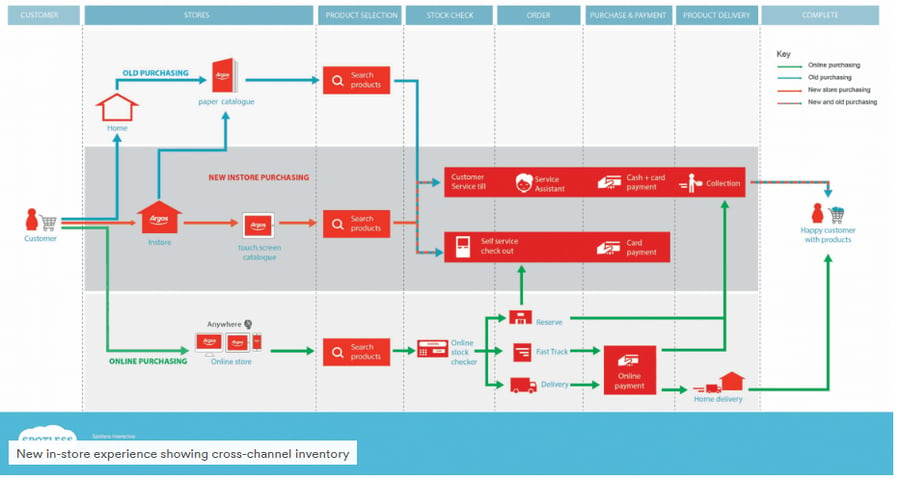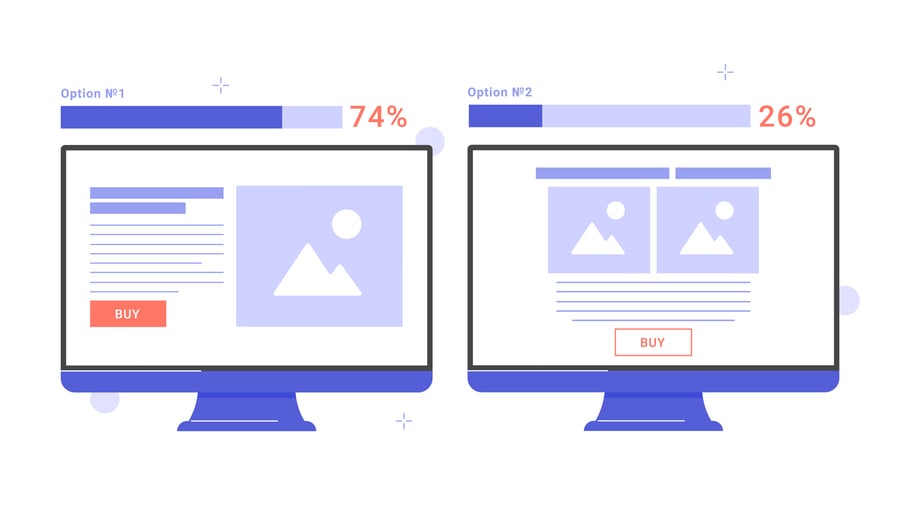
In the business world, finding a balance between sticking with what works and branching out in your field to find new, innovative ways to improve your bottom line is often essential. While tried and true techniques in the world of marketing can feel safe and profitable, there are times when you may be truly missing out by not taking chances.
As the name suggests, marketing experimentation is the practice of making changes to various products and business practices to see how customers react. Experimentations can range in various customer-facing and back-end aspects of your business, limited only by your time and budget.
While there are procedures and best practices to follow in marketing and running eCommerce shops, a nagging feeling might tell you to test something out or try out an interesting idea. That is when you ask questions and make hypotheses. Test and refine things until you find something that works.
Why is Experimentation Essential to Online Business?
There is a world of difference between brick-and-mortar businesses and eCommerce businesses. When you operate entirely online, you have the benefit of having various tools at your fingertips to help reach your audience in ways you couldn’t have imagined and measure the metrics of those efforts. This is partially why being agile as a business owner is so important.
Some common forms of business experimentation include (but aren't limited to):
- A/B Testing: Testing two versions of the same material
- Pilot: A trial that would help test a proof of concept to see if you should go further with it
- Mockups: A representation of the look and feel of a user interface
- Quantification: Asking an audience to rank and rate things to quantify their thoughts into data
How to Start Effective eCommerce Testing & Experimentation
1. Setting up Key Performance Indicators (KPIs)
The most crucial part of determining your key performance indicators will be to know what you’re tracking. These will be different for every business and product. For example, you wouldn’t expect to measure the same KPIs for a restaurant as a medical supply company. This is a foundational step to everything else you will be doing.
Now, jumping into anything without guidance isn’t the best course of action. That is why you should consider following the SMART model for choosing your KPIs, which stands for:
- Specific: Understand exactly what you’re measuring and why it is important.
- Measurable: It should be measurable to an objective, understood standard.
- Achievable: Be able to deliver on the KPI in the end.
- Relevant: It should measure something that improves performance or tells you something.
- Time-Bound: It’s achievable in a realistic, practical, and agreed-upon time frame.
Of course, this method isn’t the only way to set up your KPIs. However, it can undoubtedly be beneficial in many situations. Simply go in the direction you believe is best for your business's needs and modify from there.
You should also consider what works naturally with what you’re testing. For instance, if you’re trying to observe the performance of a product, your KPIs can be conversions. After all, hard numbers will always be a great performance metric.
KPIs can change based on various factors, as well. Demographic changes, new products, seasonal shifts, and rebranding can call for a modification, addition, or removal of specific performance metrics.
2. Implement Strong Measurement Tools
Naturally, any scientist values the quality and efficacy of their tools when experimenting. Seeking out and using the correct tools for your results and various metrics will make or break your experiments. This is the same for eCommerce testing.
Eventually, utilizing these tools will be necessary to keep your business competitive. Testing can result in a variety of benefits, including:
- Maximizing your ROI
- Understanding what works (and what areas can use improvement)
- Managing workloads and getting tasks to the right people
- Eliminate unnecessary overtime and keep your employees from being inefficient
- Reducing unnecessary overhead
Fortunately, most of the tools that you will end up using for your experiments will end up having built-in analytics features. These include Google Analytics, Mailchimp, and Google Ads.
Your chosen eCommerce platform should integrate with several of these tools and provide its own data and analytics tracking system. For example, Shift4Shop includes a reporting suite that allows you to gather complete reports on everything regarding your online store, identify trends, and gain valuable insights.
These tools will be essential to running your business regardless of the industry you participate in. They will help you identify what you’re doing right, what’s performing well, and how to enhance your marketing.
Of course, there is always the option to seek out third-party eCommerce testing options for your metrics measurements.
Whatever tools you choose, do your homework. Before spending your money and time on a tool, read reviews to ensure it has what you need. Your tools should also have a robust support system. If possible, try to acquire a free trial.
3. Determine What You Want to Test

Source: crazyegg.com
Understanding how to approach eCommerce website testing is a process in its own right. Not every business needs to test everything at the same level. However, there are a variety of factors that can and should be tested by everyone.
Site Feature Testing
Usability tests will help in building your website’s foundation. They will uncover problems relevant to human users and give you opportunities to improve them. More importantly, they will provide you with various insights into your audience’s behaviors and preferences.
Site Performance Testing
Understanding how your site runs and ensuring your users have a seamless experience can mean the difference between shoppers leaving your site or converting. Some KPIs that help you determine if your website is up to muster are bounce rates, the number of unique visitors, and time spent on your site. You can also test your website’s page speed with tools like Google’s PageSpeed Insights.
UX Testing
User experience, or UX, is the science of how your site’s layout and elements will guide your users through your online shop. Similar to site performance, your UX can be a huge factor in keeping or losing your audience. Heatmaps can be especially useful in testing your site’s UX.
Security Testing
While there are various security best practices to follow that will bring you up to industry standards, it can still be necessary to utilize tools that will help reveal particular vulnerabilities. This is known as penetration testing (pentest), which is the practice of implementing controlled cyber-attacks to determine what can be exploited by bad actors. While nothing can replace a cyber-security expert, there are some readily available pentest tools such as Wireshark that can help quickly identify some pressing issues.
Product Testing
One of the easiest aspects of your business that you can test is your product. Before your product even hits shelves, you should ask for samples from your manufacturer to ensure that they meet your standards. You can also test products internally with employees before launching.
Once you’re ready to launch, you can gauge public opinion with free samples. Some excellent opportunities for providing free samples would be to hand them out during tradeshows, events, or as a nice extra with customer orders. Afterward, be sure to send out surveys to collect valuable feedback.
SEO Testing
Your SEO practices will have a significant impact on the right people finding your website. Tools such as Yoast will help you maintain proper SEO. Paired with good analytics tools, you will have a powerful method for gaining an audience and boosting conversions.
4. Use A/B Testing to Experiment

As previously mentioned, A/B testing for eCommerce websites is the practice of changing a particular element of your site or marketing to a specific audience. By tweaking certain things on a smaller or larger scale and seeing how your audience responds, you can gain excellent insights into your user’s preferences, behaviors and how to cater to them. According to this article by VWO, Ubisoft was able to see a lead generation increase of 12% using this testing method.
Here are some practical examples of A/B testing that you can implement right now:
- Sending out two versions of an email to see which had the most effective messaging
- Changing the location and color of CTA buttons for certain people to see what drives engagement
- Optimizing your homepage and seeing if traffic and consumer engagement increased
There are a variety of ways that you can measure results in A/B eCommerce testing. Metric indicators such as heatmaps are valuable tools for such an undertaking. Conversion rates and website visits will, of course, be the critical metrics to watch out for.
5. Take What You Learned and Improve
Of course, the entire reason we test and record the results of metric tests is to learn something and improve. We always want to know what works and avoid what doesn’t. You can see benefits from all sides by improving your business practices, marketing materials, shopping experience, and products. You not only will see more short-term sales, sign-ups, and conversions, but you will also gain a loyal audience that enjoys what you provide.
However, we all know that. What is slightly more difficult (but still important) is committing to continue. After all, your results won't be static. Things can change, and so will your approach. Once you find something that works, you will have to continue tweaking and experimenting. By continuing to measure and test, you will be able to stay ahead of the game and be competitive.
As a rule of thumb, it will always be essential to test whenever you change or send something. Regardless of how small it may seem, metrics can certainly add up and affect the overall success of your business. Whether you have a new email blast, product, or simply a different URL, test it out and see what can be improved. If you find something that you believe works exceptionally well and should remain long-term, consistently challenge it by testing it against various alternatives.
Final Thoughts
While occasionally time-consuming and requiring patience, eCommerce testing is an invaluable and indispensable part of running a business. At times, reviewing all of your options and what is needed can be daunting. Fortunately, there are a variety of ways to approach this. One size does not fit all, even for two similar-seeming companies.
If you believe that one testing method isn’t measuring what you need or giving you the insights you want, you can always tweak it to fit your needs or change things up entirely. It’s essential to be agile as a business owner. That means being willing to stay on top of things through a storm of various trends, industry shifts, and company needs. Once you gain more experience in this and have a more intuitive understanding of what you want out of testing, everything will be much more efficient.





Leave a reply or comment below